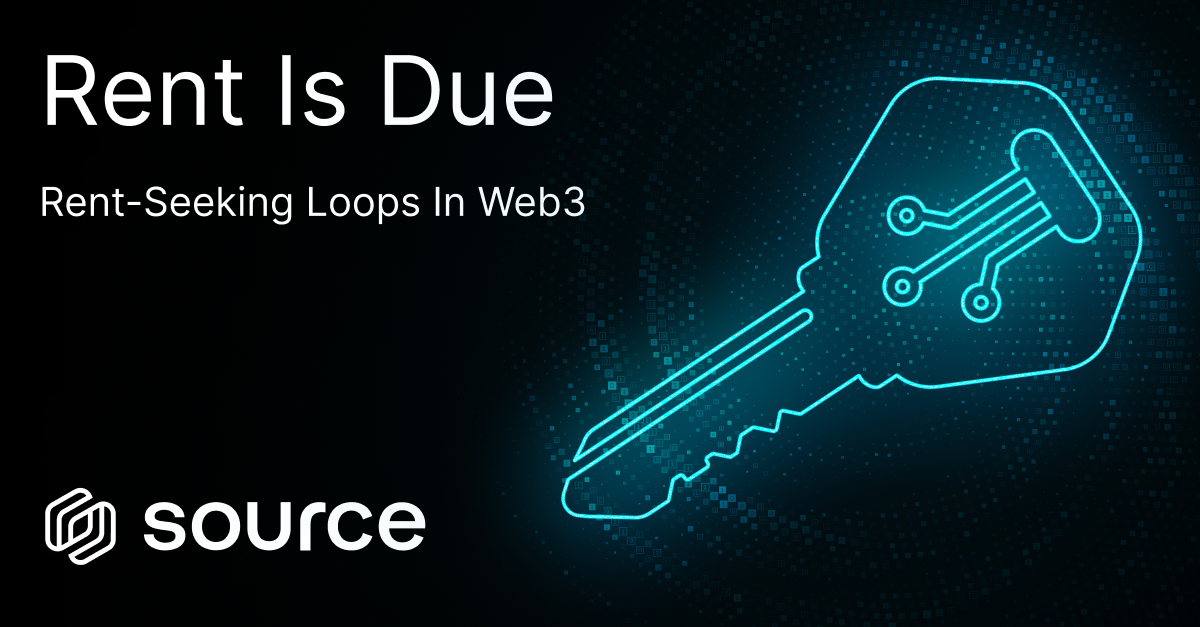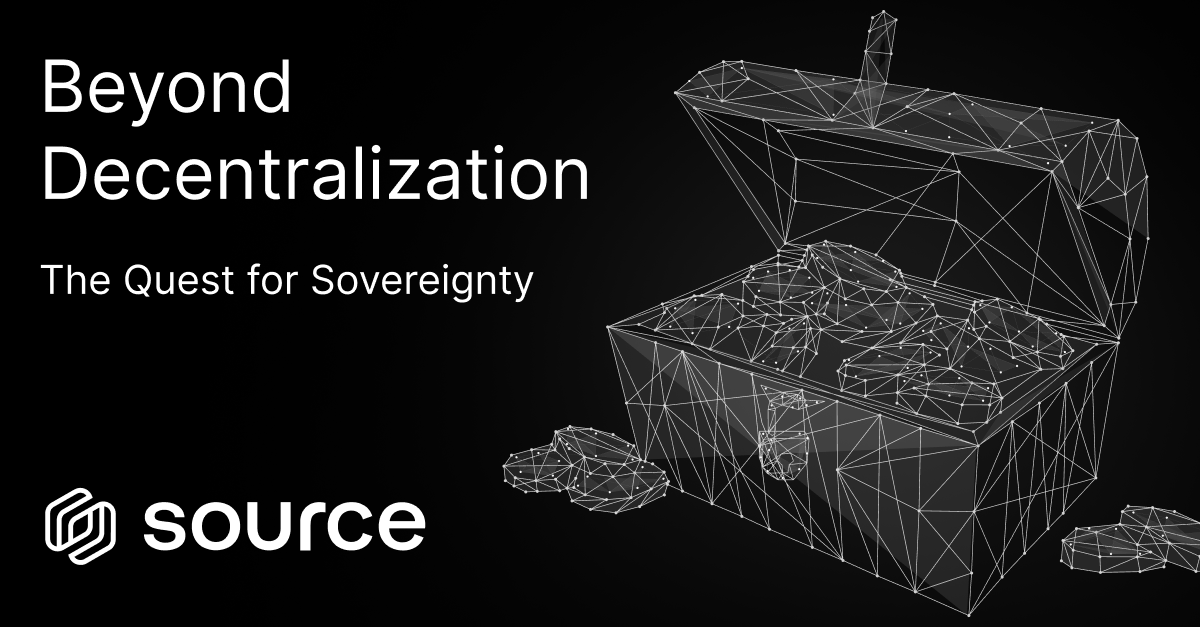Someone’s gotta pay. It’s just a matter of who - and the manner of how. Web2 ransacked the internet, and Web3 emerged to take it back and deliver it back to the people. Yet it hasn’t, with rent-seeking loops emerging everywhere and a failure to focus on what really matters.
The Battle for the Internet
The financialisation of networks happens because energy costs money. Compute, security, storage, data—everything costs money. The reason the cloud is a successful paradigm for enterprise is because it centralizes the risk and expense of global computing networks in exchange for profit and power. But large tech firms aren't the most valuable companies in the world because of their profit margins, but because of their power margins. Web3 has long extolled what a problem that is. It piled on value precisely because it was the antidote to such imbalances. Yet, in many senses, it is failing.
Their sheer domination of the global computing landscape is absolute and, due to the extractive ways services are delivered to the population, that sovereignty differential grows every single day and every passing moment. In an AI and information era - they who control the data control the world. Google, Microsoft et al, could charge a lot more for their services than they do when you consider just how essential they are to daily life around the globe, but they’d rather give away as much as they can for free or at a low cost in an effort to gather a truly important resource - the data we as humans emit every day.
Extractive Utilities
All users of the internet in effect pay thrice for its utility. First with their money, then with their data, and finally with their sovereignty. Think of it this way: the internet as we know it can mostly be shut off with the collusion of just a few key companies at the behest of just a few nation states. The bastards. So you can be certain its operation will continue only at their benefit, and every action you take online can and will be monitored. Centralized power over global communications is a fact of life that we’re only just now truly waking up to - and it’s nearly too late to do anything about it. Yet crypto finds a way.
In the way that Bitcoin tried to tear the money system away from the benefit of a few and attempt to create sovereign community cash, so the general Web3 movement has been characterised by attempting to use programmable compute environments and tokenized access control to extend this disintermediation of systems to the internet itself.
For decades tech junkies and tech scholars have lamented the demise of the internet and its effect on global culture, but blockchain marked the first time they felt they could actually do something about it. That it was possible to take power away from the center and push it to the edge. To create truly trustless, decentralized, sovereign and verifiable environments where applications and devices could perform public or private activity without paying extortionate rents and losing all control of their data and that of their users to do so.
Upon that spiritual and some felt epochal voyage thousands of tokens were launched and billions of dollars were invested - and still are invested. A lot of big players are all in. So why does it just feel less exciting, and why aren’t alts moving? What did we get wrong?
Why Are Alts Failing?
Frankly, because most don’t solve the problem. Rather than disintermediating exchange to avoid rentseeking and distribute power away from the centre, they just created another more complex intermediary instead. Web3 users don’t pay thrice for their utility, they pay four times. The same as above, but with an extra step in a decentralized network that still relies on - and indeed profits by - using the same data infrastructure rails used since the turn of the millennium. Web3 stopped being an evolution of the internet and became an addendum to it. Still valuable - but to who?
Certainly not the users, who pay gas, fees, MEV rents on chains. Then stake in protocols for yield extracted from the next user along - all while bootstrapping the liquidity to do so from the user already. Like selling you the mortgage but you still need to rent the house. Financial feudalism and a disconnected, disjointed multichain who all rely on the same data index broker for their price feeds anyway. It becomes hard to see the point of it all unless you’re just part of the game.
This isn’t to trash participatory start-up economics, or that a well-run DAO extracting governance rents can’t be a useful guiding light for a protocol’s success (even though it’s usually just a few whales). Crypto is all about community. It’s not to ignore that the open-source use of blockchain and the ability for anyone to fork and build upon an entrepreneur's success isn’t amazing. Or that there might be systems which make administration cheaper and more efficient and we general public can invest and profit from sustaining the public good. It’s about society.
It’s just that, sadly, humanity just can’t help itself. We are all greedy apes. Web3 has become as extractive - if not more so - than the very internet it tried to outmode. Protocols earn revenues through rents and fees and only a fraction of those is used to pay for the additional layer of security the blockchain provides - the rest go up the chain (so to speak) to either a parent layer like Ethereum, or to AWS for the database storage for all their user’s transactions, or plugged into an MEV bot issued by a validator in exchange for services. You get the idea.
Solve the Infra First
Whisper it. No, in fact, shout it. Tokenization is an incomplete answer to a bigger question. It’s not just about access control or political and community power. It’s not just about modulating the current data infrastructure that rules the world through an excess layer of tokenized and expensive mediation. It’s about using cryptographic primitives to change the entire structure of the internet as we know it. You know, to free democratic and participatory internet of mutual value that ‘Web3’ promised a decade ago, but barely go out the starting blocks before greed took over. You know who you are.
You need to decentralize the data, you need to collaborate on the compute. Yes, there is a place for financialization to pay for this work and the security of the network, but that comes after you’ve built sovereign data infrastructure. Because then everybody actually has something to trade, and entrepreneurial innovation can be rewarded even without proprietary control.
That’s what Source Network does for Web3. By making data sovereign, portable and verifiable, it removes the need for rent-seeking intermediaries in the first place - just as it was originally intended. Instead of tokens pointing to assets that sit on AWS in API siloes, the data itself carries proofs of integrity, provenance and consent.
The data vouches for the data, no one else, and all manipulations of that data are transparently logged onchain. Instead of paying validators and sequencers for every transaction, you can verify the integrity of the transaction yourself by self-auditing the data. The trust is implicit in the infra. You can avoid the need for constant consensus, and compute more locally - drastically reducing fees for everyone. Closing the gap between energy input and work output ever tighter. Actually building a better internet together we can all benefit from.
That includes profits. Web3 in its current form is what happens when financialization gets ahead of infrastructure - we just see endless loops of rent extraction disguised as innovation. It’s not sustainable. The original dream wasn’t wrong, it just got polluted along the way. We can be the bank, we can do our own money, we can profit from our spare devices, and contribute towards social goals for yield. We just need the distributed data management to do it - and that’s exactly what Source Network has built.
 Source Team
Source Team

